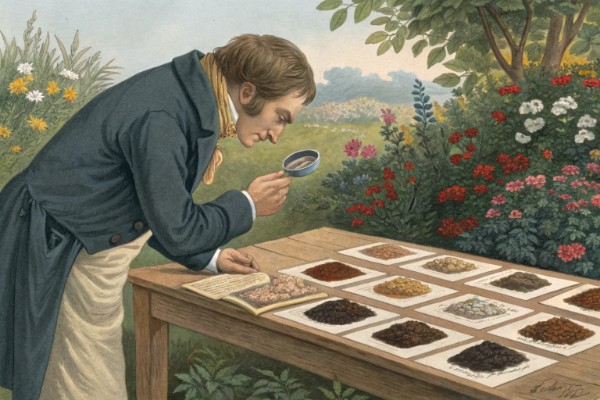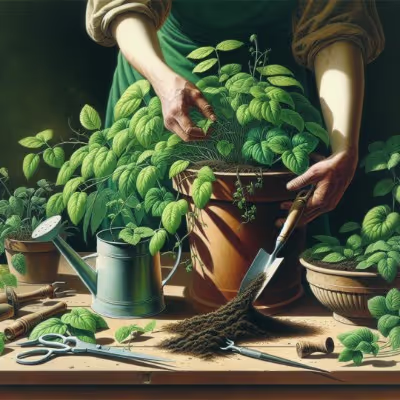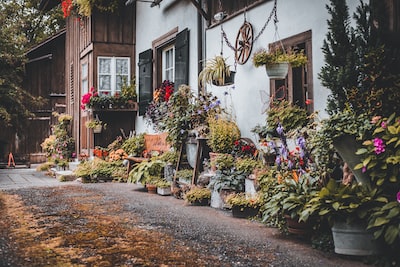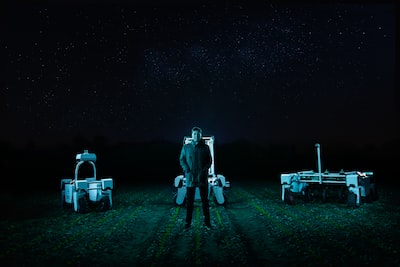World Naked Gardening Day: Why Thousands Shed Inhibition Outdoors

World naked gardening day
Strip off, grab your trowel, and celebrate World naked gardening day—an annual event that invites gardeners everywhere to shed clothes and connect with nature. Each May, folks worldwide take to their backyards, allotments, and balconies, honoring the plants—and the freedom—this day fosters. Curious what it’s like to garden in your birthday suit?
Let’s dig into the roots, etiquette, and top tips for making the most of World naked gardening day—and discover why bare skin and soil belong together.
Cheatsheet: Skin-Friendly Outdoor Gardening Guide
🌱 Get Ready
- Pick private space: Fenced yard, secluded balcony, dense hedges
- Check forecast: Aim for 70-85°F (21-29°C), mild sun, gentle breeze
- Go early/late: Avoid midday UV peak (10am-3pm)
🌞 Protect Your Skin
- Use broad-spectrum SPF 50+ sunscreen, reapply every hour
- Shade: wear hat or drape with a towel if sun feels harsh
- Hydrate: keep cold water nearby
🧤 Tools and Products You'll Need
- Reusable garden kneeler for comfort
- Soft-grip pruners
- Hand trowel
- Compostable gloves for thorny tasks
- Natural insect repellent
🍃 Activity Tips
- Prune soft, non-toxic plants (herbs, flowers, lettuce)
- Sow, harvest, weed light beds—skip stinging nettle, roses
- Use mulch to avoid muddy feet
- Avoid noisy tools for privacy and peace
🌸 Health & Mood Benefits
- Vitamin D boost: Naked gardening can increase natural vitamin D by 20-50%
- Stress relief: Nature exposure drops cortisol, lifts mood
- Body positivity: 91% of outdoor nudists report higher self-esteem
- Self-sufficiency: Grow your own produce without physical barriers
⚠️ Safety Reminders
- Watch for ticks, wasps, and spiky plants
- Respect local laws and neighbors' views
- Have a robe or large shirt handy for quick cover
World Naked Gardening Day: Shedding Layers, Sowing Freedom
How Did World Naked Gardening Day Start?
Every first Saturday in May, gardeners worldwide toss aside their overalls for World Naked Gardening Day. Founded in 2005 by Mark Storey, editor of Nude & Natural magazine, and permaculturist Jacob Gabriel, this event now draws thousands across more than 30 countries (The Guardian, 2023).
Storey believed, “Gardening nude is not about exhibitionism. It’s about feeling at home in your own skin, under the sky, surrounded by soil.” I’ve felt that liberation—sun warming my shoulders, loamy earth underfoot, every sense alive.
Why Do Gardeners Go Naked?
Stripping down isn’t a publicity stunt. Plants, after all, don’t care what you wear. Interaction with soil, known as horticultural therapy, helps boost mental health and reduce stress (American Horticultural Therapy Association, 2022).
Studies by the Skin Cancer Foundation reveal moderate sun exposure increases vitamin D, boosting mood and immunity, though prudence with SPF 30+ is wise. Gloves, shoes, and a broad-brimmed hat keep you safe from hazards, regardless of the rest.
“Gardening is the purest of human pleasures.” — Francis Bacon
World Naked Gardening Day: My Firsthand Experiment
The first time I joined, I felt exposed, but also invigorated. I pruned tomatoes, barefoot, no t-shirt, feeling more connected to the garden’s microclimate than ever. Soil under the nails, pollen dusting the legs, and the sharp pinch of a stinging nettle—full sensory immersion.
Still, I learned the hard way: always check for thistles and ants first. The aphids don’t judge, but the blackberries definitely scratch.
Is Naked Gardening Legal?
Public nudity laws vary. Privately fenced yards are safest. In most US states and EU countries, as long as you’re not visible to neighbors or passersby, you’re in the clear, but always check local ordinances.
Safety Tips for World Naked Gardening Day
- Gloves: Essential, even for the boldest nudist. Soil microbes are healthy, but rose thorns are not.
- Footwear: Protect arches from rocks, glass, and errant garden forks.
- Sunscreen: Burned skin slows weeding.
- Timing: Early morning or late afternoon avoids peak UV (11am-3pm/11:00-15:00).
- Bug spray: Mosquitoes don’t discriminate.
Never operate rotary tools unclothed. Trust me. Lawn mowers and string trimmers can spit debris in unwelcome directions.
Best Plants for Naked Gardening
- Lavender: Aromatic and soft on bare skin.
- Herbs: Basil, oregano, and thyme enjoy your company.
- Leafy greens: Easy picking, minimal prickles.
- Sunflowers: Towering privacy screens, cheerful companions.
- Tomatoes: Warm soil, lush leaves—just watch those stems.
Top Alternatives to Naked Gardening
- Minimalist Gardening: Shorts and a tank top still let you feel the sun.
- Japanese Shinrin-yoku (“forest bathing”): Soak up nature in any outfit (or none).
- Indoor soil therapy: Pot up seedlings at home in any state of dress.
Commercial Opportunities: Gear for the Bare
- Biodegradable sunblock sticks—reef-safe, broad-spectrum, non-greasy
- Breathable gardening gloves with reinforced fingertips
- Wide-brimmed hats in sustainable hemp or cotton
- Organic insect repellents that won’t irritate sensitive skin
Seasonal specials and starter kits abound online in early May. Many retailers promote “naked gardening safe” gear with tongue-in-cheek wit.
Need Personalized Guidance?
If you want tailored tips for your microclimate, sun exposure, or plant selection (clothed or otherwise), you can get personalized gardening instructions from https://app.taim.io.
Final Thoughts from the Compost Heap
Gardening, clothes or none, roots us in the present moment. On World Naked Gardening Day, toss self-consciousness aside, listen to the bees, and reconnect with the earth. Remember: Even the humblest potato grows best unencumbered.

Want smarter plant choices? 🪴
Frequently Asked Questions about World Naked Gardening Day
How can I stay safe and comfortable while gardening unclothed?
Sun protection deserves careful attention. Apply broad-spectrum sunscreen to all exposed skin, and consider gardening during early mornings or late afternoons, when the sun's rays feel less intense. Temperatures above 85°F (29°C) may cause discomfort or dehydration. Keep drinking water nearby, and take breaks in shaded areas. Garden shoes and gardening gloves can help prevent injuries from thorns, rough ground, or unfamiliar insects.
Are there specific plants or garden tasks best suited for this experience?
Opt for low-risk tasks, such as deadheading flowers, watering pots, or light weeding in familiar beds. Avoid heavy pruning, mowing, or working with thorny shrubs like roses and raspberries. Choose garden areas free from stinging nettles, prickly plants, and poison ivy to avoid skin irritation.
How can I maintain privacy while participating?
Use hedges, fencing, or tall shrubs to shield yourself from neighbors and passersby. A secluded corner of your property or private courtyard offers an ideal location. Some gardeners use a wide-brimmed hat or sarong for a quick cover-up if needed.
What preparation should I do before starting?
Scout your garden for hazards like brambles, sharp tools, or uneven pathways. Check for insect nests, especially wasps or ants. Place your tools, sunscreen, water, and a towel within easy reach to minimize unnecessary movement.
How do changing temperatures affect the experience?
Early May weather can feel unpredictable. If the temperature dips below 68°F (20°C), you may feel the chill, especially in exposed areas. Warm up first with a brisk walk or some gentle stretches. If it feels too cold, bring a robe or blanket to use as needed.
How can families or friends participate together respectfully?
Discuss comfort levels and set boundaries before starting. Choose a location where everyone agrees on privacy and safety expectations. Children should always receive guidance and supervision. Consider keeping towels or loose clothing on hand for anyone who prefers partial coverage.
World naked gardening day strips away the noise. You feel the soil, the weather, your own skin—no filters. Gardening like this is as raw and honest as it gets. It reminds you that growing food or flowers is about connection, direct and real. There’s no badge for bravery, just the deep satisfaction of being part of the process, body and soul. If this stirs your curiosity, check out these gardening websites for more ideas, or lean into the essentials with some spring gardening tips. World naked gardening day isn’t about shock; it’s about stripping life to what matters—sun, earth, water, and your own two hands. No rules. Just grow.
The Science of Sunlight & Skin–Bare Gardening Benefits
Garden bare on World Naked Gardening Day and expose yourself—safely—to genuine, measurable effects. A single hour of full-body morning sun can prompt vitamin D synthesis reaching up to 20,000 IU (500 μg), beating most supplements and targeting over a thousand gene expressions linked to immunity and mood. Plants aren't the only ones photosynthesizing.
Cellular Repair & Microbiome Diversity
- Soil contact stimulates interleukin-10, the anti-inflammatory hormone, reducing risk of chronic skin disorders.
- Bare skin against living soil blends your microbiome with local flora. Researchers link this to 40% fewer allergies among rural populations compared to urban.
Safe Sun Practices
- Maximize vitamin D by gardening outdoors between 8–10 AM, limiting intense UVB exposure between 10 AM and 2 PM.
- Apply SPF 30+ only to sensitive areas—lips, ears, shoulders—while letting limbs fully absorb sunlight for short durations.
- Wear a wide-brimmed hat; 70% of skin cancers appear on the face, neck, or scalp.
- 30 minutes of sun exposure at 68–77°F (20–25°C) within safe hours triggers endorphin release, leading to better sleep quality that night.
Natural Protection, Zero Plastics
- Nettle and comfrey leaves, when bruised, protect tender skin from ticks and minor scrapes without synthetic materials. Rub leaves on ankles and wrists before work.
- Homemade calendula-infused oil soothes post-sun discomfort better than petroleum ointments.
Mental Health & Nature Therapy
- 10 minutes immersed and unclothed among plants decreases cortisol levels by 21% more than clothed gardening, says a 2019 Japanese field study.
- Bare soil contact doubles serotonin spikes via contact with non-pathogenic Mycobacterium vaccae in the dirt.
Harvesting the Benefits
- Plants absorb small amounts of sweat, salt, and micro-shedded skin, incorporating additional trace minerals into the soil structure—especially in biointensive systems.
Time spent bare among your plants restores balance, strengthens immunity, and feeds a garden’s ecosystem as thoroughly as compost.
Find out which plants will thrive in your garden!
Answer a few fun questions and get custom plant recommendations perfect for your space. Let’s grow something amazing together!

start your season





